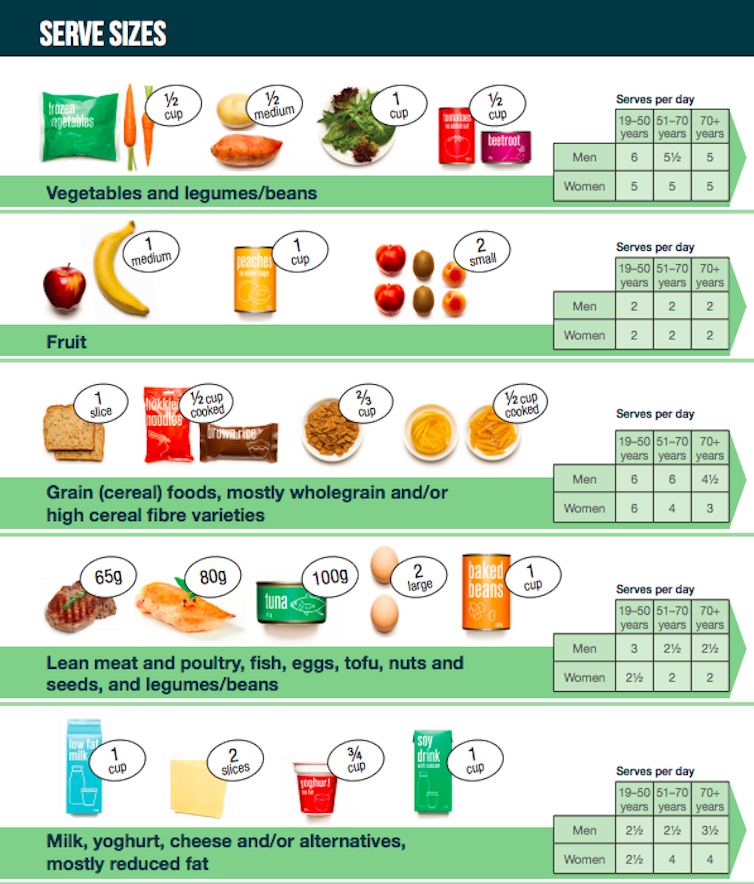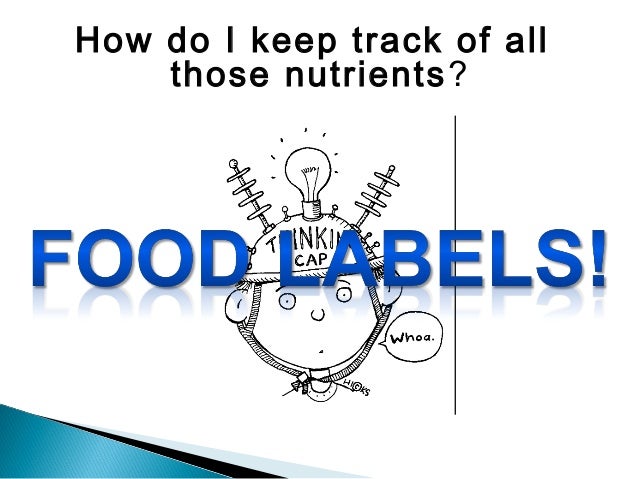42 why are serving sizes standardized on food labels
Reading Food Labels - Understanding How Food Labels Work Below is an example of two milk labels contained on the FDA site that show the advantage of being able to compare standardized food labels - One label is for skim milk; the other for whole milk. A quick comparison lets you see that, for the same size serving of milk ( one cup-236 ml ), the skim milk contains 80 calories and the whole milk 120 . FDA Proposes Larger -- More Realistic -- Serving Sizes for ... FDA Proposes Larger -- More Realistic -- Serving Sizes for Food Labels The FDA is proposing to change the standard serving sizes to reflect what people actually eat. The FDA defines the current serving sizes as amounts of foods commonly consumed based on dietary intake surveys conducted in the 1970s and 1980s. By Dr. Lisa Young, Contributor
Serving Size vs Portion Size Is There a Difference - Academy ... Serving size is a standardized amount of food. It may be used to quantify recommended amounts, as is the case with the MyPlate food groups, or represent quantities that people typically consume on a Nutrition Facts label. Portion size is the amount of a food you choose to eat — which may be more or less than a serving.

Why are serving sizes standardized on food labels
FDA Food Labeling Enforcement - LabelCalc Often, food manufacturers tell me that the FDA nutrition labeling rules seem very particular (some even say nitpicky). From label layouts to rounding rules and everything in between, I'll admit the FDA does have some pretty stringent guidelines for proper nutrition labeling. This is, however, for good reason. Does The Fda Regulate Serving Sizes? [Comprehensive Answer] Why are serving sizes standardized on food labels? Serving sizes are standardized to make it easier to compare similar foods; they are provided in familiar units, such as cups or pieces, followed by the metric amount, e.g., the number of grams (g). The serving size reflects the amount that people typically eat or drink. PDF Understanding Portion and Serving Sizes Serving sizes appear on the Nutrition Facts label and sometimes on the front of food packaging, and they are used to calculate the nutrient information displayed on the label (such as calories, totalfat or dietary fiber per serving). Refer to this image of a Nutrition Facts label as an example.
Why are serving sizes standardized on food labels. The Nutrition Facts Label: Its History, Purpose and Updates 9 Mar 2020 — The NLEA required food packages to contain a detailed, standardized Nutrition Facts label with information such as: serving size; the number ... Has the USDA Written a Standardized Definition for a Serving ... Nutrition labels on foods may recommend serving sizes that are slightly different from those on the food pyramid. Before the U.S. Food and Drug Administration adopted new regulations, individual... No, serving sizes on food labels don't tell us how ... - Coach 10 Oct 2019 — How serves on labels impact our food choices ... Even though labelled serving sizes are not related to standard serves or the recommended amounts ... Why Are Serving Sizes on Nutrition Labels So Small? The tables are intended to describe the amounts typically consumed in a serving, but the FDA determined these figures before Americans began eating more fatty, sugary, and salty foods. Notice...
Portion Size Versus Serving Size - American Heart Association Serving Size is the amount of food listed on a product's Nutrition Facts label. So all of the nutritional values you see on the label are for the serving size the manufacturer suggests on the package. Once we understand the difference, it's easier to determine how much to serve and easier to teach kids the difference between the two. Nutrition Facts Matter: What Food Labels Mean (and Why ... Pay extra attention to the serving size. This is often one of the most overlooked items on the nutrition facts label. An official serving may be smaller that you think. A "serving" is different from a "portion." A serving is a measured amount of food. A portion is the amount you decide to actually eat for a meal or snack.[2] No, serving sizes on food labels don't tell ... - The Conversation 8 Oct 2019 — Even though labelled serving sizes are not related to standard serves or the recommended amounts that should be eaten, research shows consumers ... How to Understand and Use the Nutrition Facts Label | FDA Serving sizes are standardized to make it easier to compare similar foods; they are provided in familiar units, such as cups or pieces, followed by the metric amount, e.g., the number of grams (g)....
FDA Food Product Labeling & Packaging ... - ESHA Research The Food Allergen Labeling and Consumer Protection Act of 2004 (FALCPA) mandates that packaged food items must declare, in plain language, the presence of any major food allergens (Milk, Egg, Fish, Crustacean shellfish, Tree nuts, Wheat, Peanuts, Soybeans, Sesame) on the product packaging.. Placement: In general, place the Allergen Declaration on the PDP or the Information, near the Nutrition ... IFIC Study Serves Up Reality Check on Serving, Portion Sizes "Helping to control weight" ranked in the top two reasons for 36%, followed by "helping to avoid eating too much of certain foods" (30%) and "helping to know how much they should be eating or... FDA Final Guidance on Nutrition Facts Label Serving Size Monday, January 6, 2020. In May 2016, FDA issued final rules changing the Nutrition Facts label for packaged foods and updating regulations on serving sizes to - among other things - provide ... The Difference Between 'Portion Size' and 'Serving Size ... It's true that understanding serving sizes helps you make sense of food labels, so that you can get a more accurate sense of the nutritional makeup of your food depending on how many servings you...
Definition and Importance of the Serving Size | Healthfully The serving size creates a standard reference used on food labels. Importance The standardized serving size is one tool you can use to be sure you're following a healthy, balanced diet. The United States Department of Agriculture determined that nutritional values be contained in the defined serving size.
The Importance of Reading the Food Label and Nutritional Facts The presence of standardized nutrition labels makes it easy for all of us to compare the contents of similar products and decide which one we would prefer to consume. All labels provide key information about any given packaged food, such as serving size, number of calories, fat content, cholesterol, protein, sugar content, carbohydrates, etc.
A History of What Is Required on Food Labels and the ... The food ingredient panel, serving sizes and terms such as "low fat" and "light" are standardized. This is pretty much the nutrition label as we know it today. 1994: Nutrition Facts panel, basic per-serving nutritional information, is required on most foods under the NLEA of 1990. Food labels are to list the most important nutrients in an ...
Food Labeling Modernization Act of 2021: What the Bill ... The Food Labeling Modernization Act (FLMA) of 2021, an update of legislation originally introduced to Congress in 2018, was presented to the House and Senate in August.As written, the bill would require FDA to establish a standard front-of-package labeling system for all FDA-regulated food products.
Differences between EU and US nutrition labels go far ... In the US, nutritional labels must indicate the number of servings per container - so calories are broken down based on how many slices of bread come in a package, or how many 12-chip portions a...
“Impact of unstandardized food serving size on consumer ... 22 Oct 2015 — information on food labels that will help consumers who read nutritional information ... tries, food serving sizes are standardized as 100.
Serving Size on the New Nutrition Facts Label - U.S. Food ... Some serving sizes have changed on the new Nutrition Facts label. By law, serving sizes must be based on the amount of food people typically consume, rather than how much they should consume....
Food Label Flashcards - Quizlet Serving Size and serving per container Serving sizes are supposed to be standardized to reflect the amt of food people actually eat, but sometimes they are quite unrealistic. How to find out calories # of calories x servings per container 90 x 4 = 360 calories How to find percent of calories from fat calories from fat / calories 30 / 90 = .33 = 33%
Serving Size vs. Portion Size, What's the Difference? A serving size is defined as a standardized, measured amount of food. This is most commonly used by the United States Department of Agriculture (USDA) in reference to food groups or printed on...
Serving Size and Nutrition Labelling: Implications for ... - NCBI by N Kliemann · 2018 · Cited by 29 — For instance, for foods that have a reference serving size of 50 g, a serving size of 35 g to 65 g can be used in the nutrition information.







Post a Comment for "42 why are serving sizes standardized on food labels"